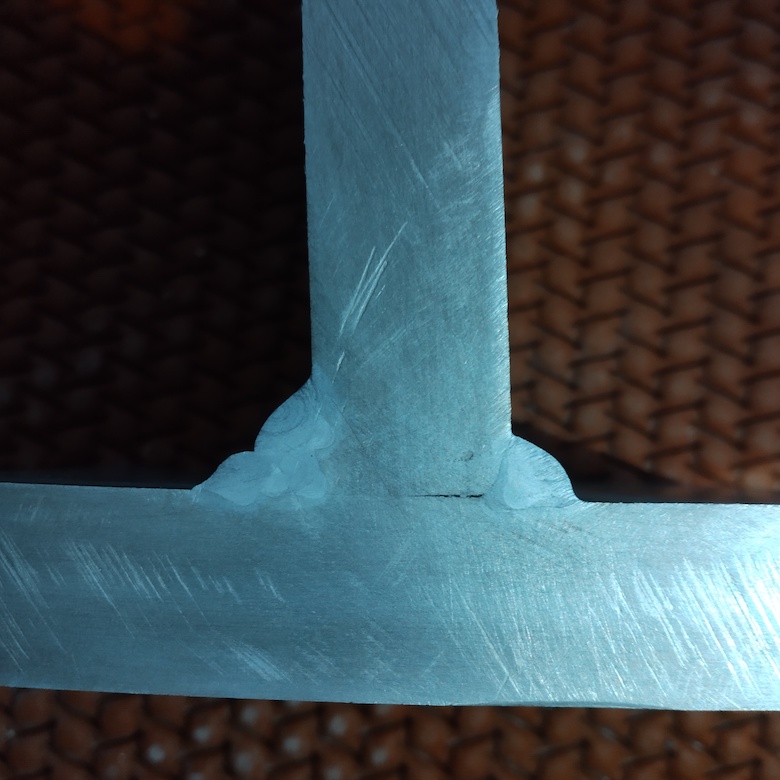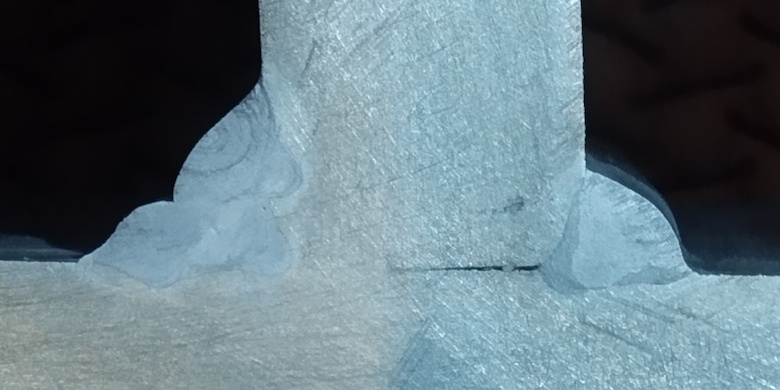
Done it! Managed to macro-etch an aluminium (aluminum) weld
cross-section. Revealing the inner form of the weld.
Using "household" and "builder's merchant" supplies.
"Macro" is the next-level test in refining your weld conditions after
visual inspection of the surface appearance of the weld. Macro
reveals the inner cross-sectional structure of your weld - including
weld penetration always and the layering in a multi-run weld.
Doing welds, you want "macro's" whenever you need to diagnose weld
quality.
So you really want this which has been achieved as a generally
available method.


Aluminium is very corrosion-resistant. 5000-series Al-Mg alloys,
which this is, notably so. Can be used in seawater without paint or
any other protection.
Hence must inevitably present a challenge to etch, given etching is a
selective corrosion reaction.
The etchant is hot "drain unblocker" solution, taken to be
mainly/entirely sodium hydroxide (NaOH)
(North American recommendation is use spray-on oven-cleaner, the brand
"Easy-Off" being mentioned - also with NaOH as the active substance)
Yes. NaOH = sodium hydroxide = "caustic soda". It is very caustic. Horrible things happen if you get it on you.
Very crude:
ie this is a "robust" technique.
This is an Ali-MIG (Ali-GMAW) T-fillet weld done in the horizontal-vertical position ("PB"/"2F") on 20mm plate thickness 5083 aluminium with a suitably matching 1.2mm wire in pure Argon shielding gas.
Single-run weld to the right-hand-side; 3-run weld to the left-hand-side.
20mm thickness of aluminium plate, with the high thermal conductivity
of aluminium, presents some welding challenge.
Consequently a common defect is lack-of-fusion (no weld penetration).
An explanation...
Weld penetration on a macro can be evaluated by tracing the
continuation of the plate surface over the weld surface and seeing how
far into the depth of the plate the weld penetrates beyond that
projected line.
On a T-fillet there are three plate-surface lines you can project: the
one line projecting the "continuing" plate surface; and the two lines
projecting the "terminating" plate surfaces.
Here, one defect seen in the macros is excessive "finger" penetration.
ie excessive penetration.
That being so, there is leeway to adjust welding conditions in ways
which will both avoid "finger penetration" and increase weld pool
fluidity to eliminate other flaws/defects.
(R. Smith, 23Nov2022)